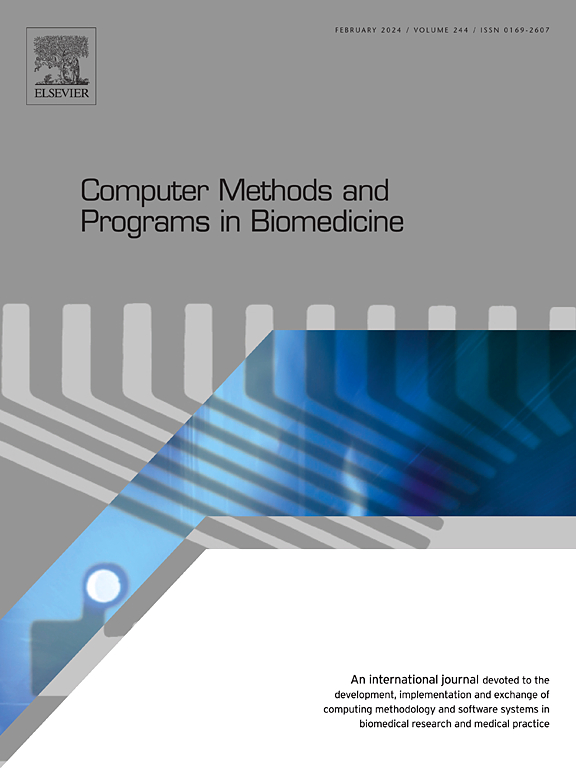Fluid-structure interaction analysis of bioinspired polymeric heart valves with experimental validation
IF 4.9
2区 医学
Q1 COMPUTER SCIENCE, INTERDISCIPLINARY APPLICATIONS
引用次数: 0
Abstract
Background and objectives
Valvular heart disease, when not addressed adequately, can result in heart failure, serious heart-related health problems, and in some cases, death. Polymeric heart valves (PHVs) are promising valve replacement technologies that may offer improved durability and better biological performance. Notably, PHVs have the potential to accommodate highly innovative valve designs. Given this feature of PHVs, it is important to shortlist the best performing valve designs prior to committing to extensive in vitro hemodynamic validation prototypes.
Methods
This study presents a computational fluid-structure interaction (FSI) workflow, which integrates computational fluid dynamics (CFD) and finite element analysis (FEA), to simulate the hemodynamic performance of PHVs with two different valve designs under physiological conditions.
Results
The model accurately predicts cardiac output (CO), effective orifice area (EOA) and regurgitant fraction (RF) and these predictions have been successfully validated using experimental data. Consistent with experimental findings, increasing valve thickness results in a decrease in EOA, with RF trends varying between different valve designs. The fully opened and unfolded valve exhibited the lowest WSS on the leaflet surfaces. Both valve design and thickness significantly influence stress distribution along the leaflets with the thinnest valves showing lower von Mises stresses during opening and higher stresses during closing. Detailed analysis of flow patterns, wall shear stress (WSS), valve opening and closing behaviors, and mechanical stress distribution are presented.
Conclusions
This work demonstrates the potential of FSI simulations in predicting the hydrodynamic and mechanical behavior of PHVs, offering valuable insights into valve durability and design optimization for improved patient outcomes. This approach can significantly accelerate valve development by reducing reliance on extensive in vitro and in vivo testing.

生物聚合物心脏瓣膜流固耦合分析及实验验证
背景和目的如果没有得到充分的治疗,瓣膜性心脏病可导致心力衰竭,严重的心脏相关健康问题,在某些情况下,甚至死亡。聚合物心脏瓣膜(phv)是一种很有前途的瓣膜替代技术,可以提供更好的耐用性和更好的生物性能。值得注意的是,phv具有适应高度创新的阀门设计的潜力。鉴于phv的这一特点,在进行广泛的体外血流动力学验证原型之前,将性能最佳的瓣膜设计列入候选名单是很重要的。方法采用计算流体力学(CFD)和有限元分析(FEA)相结合的计算流固耦合(FSI)工作流,模拟两种不同阀芯设计的phv在生理条件下的血流动力学性能。结果该模型准确预测了心输出量(CO)、有效孔面积(EOA)和反流分数(RF),并通过实验数据对预测结果进行了验证。与实验结果一致,增加阀门厚度导致EOA降低,不同阀门设计的RF趋势不同。完全打开和未折叠的瓣膜在小叶表面的WSS最低。阀门的设计和厚度对沿叶片的应力分布有显著影响,最薄的阀门在开启时具有较低的von Mises应力,而在关闭时具有较高的应力。详细分析了流体流态、壁面剪切应力、阀门启闭行为和机械应力分布。这项工作证明了FSI模拟在预测phv的流体动力学和力学行为方面的潜力,为瓣膜耐久性和设计优化提供了有价值的见解,以改善患者的预后。这种方法通过减少对广泛的体外和体内测试的依赖,可以显著加速瓣膜的开发。
本文章由计算机程序翻译,如有差异,请以英文原文为准。
求助全文
约1分钟内获得全文
求助全文
来源期刊

Computer methods and programs in biomedicine
工程技术-工程:生物医学
CiteScore
12.30
自引率
6.60%
发文量
601
审稿时长
135 days
期刊介绍:
To encourage the development of formal computing methods, and their application in biomedical research and medical practice, by illustration of fundamental principles in biomedical informatics research; to stimulate basic research into application software design; to report the state of research of biomedical information processing projects; to report new computer methodologies applied in biomedical areas; the eventual distribution of demonstrable software to avoid duplication of effort; to provide a forum for discussion and improvement of existing software; to optimize contact between national organizations and regional user groups by promoting an international exchange of information on formal methods, standards and software in biomedicine.
Computer Methods and Programs in Biomedicine covers computing methodology and software systems derived from computing science for implementation in all aspects of biomedical research and medical practice. It is designed to serve: biochemists; biologists; geneticists; immunologists; neuroscientists; pharmacologists; toxicologists; clinicians; epidemiologists; psychiatrists; psychologists; cardiologists; chemists; (radio)physicists; computer scientists; programmers and systems analysts; biomedical, clinical, electrical and other engineers; teachers of medical informatics and users of educational software.
 求助内容:
求助内容: 应助结果提醒方式:
应助结果提醒方式:


